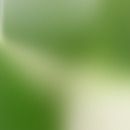Synonym(s)
DefinitionThis section has been translated automatically.
By definition (according to ESCOP = European Scientific Cooperative on Phytotherapy, see below Phytotherapy), phytotherapeutic medicinal products are those that contain exclusively "plants, parts of plants or plant constituents or combinations thereof, in processed or unprocessed form, as active ingredients. Phytotherapeutics are therefore mixtures of substances and not individual substances. Their effect results from the sum of their ingredients. There is no chemical isolation of a single medicinal substance.
Classical dermatological phytotherapeutics are or were e.g. the various tars (wood tars: Pix betulina, Pix fagi, Pix juniperi, Pix pinaceae or coal tar: Pix lithanthracis or their extracts - Liquor carbonis detergens), ichthyol, podophyllin or the antipsoriatic agent chrysarobin which is no longer used today.
Although a number of current drugs are of plant origin, e.g. the cytostatic drugs vincristine, vinblastine, taxol, digitoxin and atropine, they are not phytotherapeutics in the narrower sense, as only the isolate or its chemical modifications are used medicinally.
Undesirable effectsThis section has been translated automatically.
- Primrose plants
- Bulbous plants
- Lily plants (see e.g. garden tulip below)
- umbelliferous plants (see e.g. caraway seeds below)
- Orchids
- Gesneria plants.
Note(s)This section has been translated automatically.
- Monographs are prepared, for example, by the Committeefor Herbal Medicinal Products (HMPC), the European Medicines Agency (EMA) and the WHO. Furthermore, material collections of various associations (e.g. at the Associations (e.g. on European level the Euro-Monographs of the "European Scientific Cooperative on Phytotherapy - ESCOP") are taken into account. In the EU countries, finished herbal medicinal products, like other finished medicinal products, must be approved by the authorities prior to marketing in accordance with the provisions of pharmaceutical law. For this purpose, quality, efficacy and safety must be proven.
- The quality of clinical studies is usually classified according to a "level of evidence, LOE" of A-D.
- A = highest level with randomized, clinically controlled studies and cohort studies
- B = conclusive, retrospective, or investigative cohort studies, case-control studies, and follow-up studies from A
- C = case reports or follow-up studies from B
- D = Expert opinion without scientific background, pure laboratory research.
- The decision which preparation to prescribe depends on their personal view of disease, disease mechanisms and on the medicinal plants or their active ingredients.
- Selected dermatologically relevant phytotherapeutics:
- Araroba tree (Goa powder - chrysarobin).
- Avocado
- Aloe vera
- Balloon vine (Cardiospermum)
- Birch
- Bittersweet stem (Dulcamara)
- Borage (Borage seed oil)
- Beech
- Calendula ( marigold)
- Cayenne pepper
- Ivy
- Eucalyptus (Eucalyptus oil)
- Fennel
- Tannins
- Ginkgo biloba
- Ginkgo biloba
- Hamamelis (witch hazel)
- Hesperidin
- Wood tars (birch wood tar, beech wood tar) / coal tar (see tar below)
- Ichthyol®
- St. John's wort
- Chamomile
- Chestnut (horse chestnut)
- Coriander
- Kitchen onion
- Caraway (black cumin - eczema, atopic)
- Larch turpentine (boils, carbuncles)
- Lavender (lavender oil)
- Tree of life (Thuja)
- Mahonia
- Lemon balm ( lemon balm)
- Myrrh (oral aphthae, gingivitis)
- Evening prim rose (Evening primrose oil)
- Perubalsam
- Podophyllin
- Polypodium leucotomos (Heliocare)
- Rosemary (head itching, dandruff)
- Sage
- Horsetail
- Silver willow (salix alba)
- Sunflower
- licorice root (glycyrrhiza glabra, licorice)
- Tea, green
- Tea, black
- Tea tree (tea tree oil)
- Frankincense
- Vine leaves, red
- Wheat (wheat bran).
LiteratureThis section has been translated automatically.
- Arberer W (2008) Contact allergy and medicinal plants. JDDG 6: 15-24
- Mitchell JC et al (1979) Botanical Dermatology. Vancouver, Greengrass
- https://arzneipflanzenlexikon.info/



